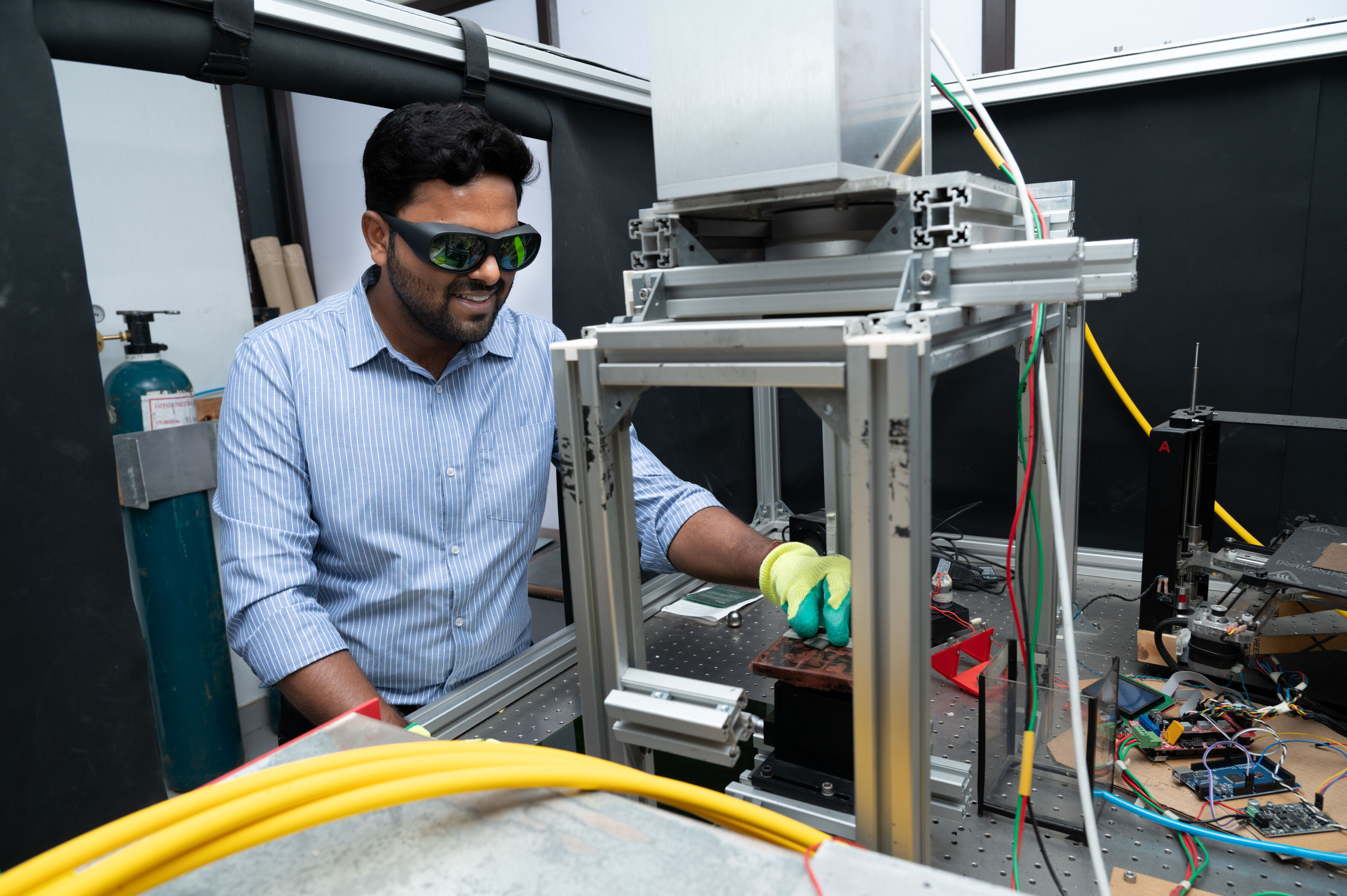What it does
A compact household recycling machine that shreds, melts, and 3D prints plastic waste into useful items like planters and decor. It enables waste recycling at source and removes cost barriers for community-led waste management.
Your inspiration
Plastic waste pollutes land and water and enters our bodies as microplastics. Over 80% of it remains unrecycled due to poor collection, contamination, and high processing costs. Traditional recycling is centralized and inaccessible to most people. I realized that real impact can come from local, shared efforts. This inspired the idea of a compact recycling machine (like a washing machine) that lets users repurpose plastic waste at home, before it’s mixed with other trash. Turning household plastic into useful products makes recycling accessible, affordable, and community-driven.
How it works
Recycling starts with cleaning and drying household plastic waste. This waste is fed into a built-in double-shaft shredder that reduces it into small shreds (2–3 mm). These are transferred via a connecting hose to the printhead of the 3D printer. The printhead includes a motor-driven auger screw that pushes the plastic into a heated zone. The plastic melts and is deposited through a nozzle onto the print bed. The printer follows a CAD model, moving in all directions to build the object layer by layer. Users can select from a catalog of predefined items—like planters, pen stands, or vases—or upload their own designs. The compact machine includes a simple user interface and empowers individuals to convert their plastic waste into useful products right at home, transferring the responsibility of recycling to the user, much like doing one’s own laundry or dishes.
Design process
Our journey began by studying the lifecycle of plastic waste and why only 10–20% gets recycled. We identified that contamination, costly sorting, and centralized recycling systems make it less viable than virgin plastic. Realizing that effective recycling must happen at the source, we envisioned a compact, easy-to-use recycling system that lets users convert their plastic waste into useful products at home. We initially built a filament extruder, but producing filament required pre-shredded plastic and a separate 3D printer-making it expensive and complex. To reduce user burden, we designed an integrated system with three core functions: shredding, extrusion, and 3D printing. We prototyped a double-shaft shredder with to-and-fro motion to prevent jamming using a current-controlled algorithm. We designed a custom printhead comprising a motor-driven auger screw and a heated nozzle. Several iterations of screw lengths, barrel designs were tested for optimal melting and flow. We retrofitted these onto a Prusa i3 MK3S+ and modified its firmware. A custom G-code interpreter was developed to synchronize flow with print speed. Iterative testing and continuous improvements led to a reliable, compact filamentless 3D printer that repurposes waste plastic into frugal products.
How it is different
Centralized recycling systems are capital-intensive and inefficient. Existing pellet-fed 3D printers like Gigabot X are large, costly, and designed to work with industrial-grade pellets or pre-shredded plastic, requiring a separate shredder. Most available shredders are bulky, expensive, and unsuitable for household use. Combined, their scale and complexity far exceed the needs of small-scale or household recycling. Moreover, current 3D printers demand familiarity with CAD tools, STL files, and G-codes, creating a technical barrier for common users. Our design is the first compact, all-in-one unit that integrates shredding, extrusion, and 3D printing. It includes a built-in object library to let users select printable items without any design skills. Designed like a household appliance, it makes recycling as easy as doing laundry - simple, accessible, and affordable.
Future plans
We’ve developed a functional prototype using a Prusa 3D printer and now aim to develop a market-ready custom electronics and industrial design. We plan to open-source the design for community-driven development and create an online platform to share designs and sell recycled products. Additionaly, a larger variant is also planned, capable of making plastic furniture. This helps set up local recycling shops where communities can exchange plastic waste for money. Our goal is to build a decentralized, self-sustaining recycling ecosystem that rewards both waste contributors and recyclers.
Awards
Winner of Best Product Design in Clean Tech at Vishwakarma Awards 2023 (IIT Delhi & Maker Bhavan Foundation). 1st Prize in Technological Innovation for Sustainable Development at ICon 2022 (IBM & IITGN). 1st in Sustainability Poster Competition by KPCSD, IITGN. Regional Finale presenter in Sustainability at Boeing BUILD.



Connect